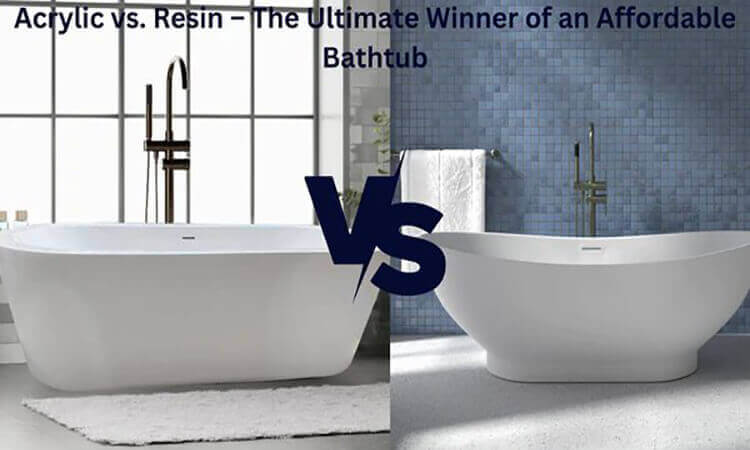Selecting the perfect bathtub for your bathroom can significantly influence your bathing experience and the overall aesthetic appeal of your space. In discussions about bathroom design, two popular options often arise: acrylic bathtubs and solid surface tubs. Each material possesses distinct advantages and considerations, catering to varying preferences and requirements. Let's delve deeper into the disparities between acrylic and solid surface tubs to assist you in making an informed decision.
Material and Construction
Acrylic tubs are typically crafted from acrylic sheets reinforced with fiberglass for enhanced strength and durability. During manufacturing, acrylic sheets are molded into various shapes and sizes, then adhered to mold walls using compressed air to form the bathtub. The result is a sleek, modern appearance with a smooth surface finish.
On the other hand, solid surface tubs are composed of crushed stone minerals like marble, quartz, or limestone mixed with resin (with variations among manufacturers). This mixture is poured into molds and cured to create a robust bathtub, which is meticulously polished for its final appearance.
Due to variances in manufacturing processes, acrylic and solid surface bathtubs exhibit contrasting structures. The former are often hollow and lighter, while the latter counterparts are solid and tend to be heavier. As a result, solid surfaces offer greater resistance to physical impacts compared to acrylic models.
Aesthetics and Customization
Both acrylic and solid surface tubs offer excellent processability, providing a wide array of styles to choose from. Acrylic comes in diverse colors and finishes, ranging from timeless white to vibrant hues and even transparent options. If you're aiming to match your bathtub with your bathroom's color scheme, acrylic is the ideal choice.
In contrast, solid surface bathtubs offer unparalleled customization potential. As they are crafted through pouring, custom production is feasible as long as the mold can be designed. This versatility allows for intricate shapes and designs, including freestanding, corner, and embedded options.
Moreover, The stone resin texture and natural stone-like appearance exude a luxurious charm, a feature that sets solid surface tubs apart. This stands as a significant advantage over acrylic, which struggles to replicate the exact texture and depth of natural stone.
Maintenance and Lifespan
Both acrylic and solid surface tubs boast excellent durability, scratch-resistance, stain-resistance, and fade-resistance. With their non-porous surfaces, they effectively deter the growth of mold and bacteria. Furthermore, minor damage or scratches on the tub can be easily addressed by polishing with sandpaper, restoring it to its original condition.
For regular cleaning, Giving Tree Home recommends wiping the tub with mild soap and water. Avoid using strong acids or alkalis, as well as abrasive cleaners or harsh scrubbing tools, to prevent scratches or discoloration of the surface.
With proper maintenance, both acrylic and solid surface tubs can last for up to ten years, providing lasting enjoyment and functionality for your bathroom.
Warmth and Comfort
While acrylic tubs offer decent thermal insulation, providing a cozy bathing experience by retaining water warmth, they may not meet the preferences of users who enjoy multitasking during baths, such as watching TV shows, reading books, or listening to music. For those seeking enhanced warmth and comfort, alternatives like resin stone or cast iron might be more suitable, as they offer superior thermal insulation compared to acrylic.
Solid surface tubs, utilizing stone resin as their primary material, boast denser composition and lower thermal conductivity. This results in gradual heat release, prolonging water temperature retention and elevating thermal insulation performance. Additionally, the thicker build of stone resin materials further enhances their insulating properties, ensuring a luxuriously warm bathing experience.
Ending
In summary, both acrylic and stone resin bathtubs offer unique benefits and considerations. Acrylic tubs are cost-effective, versatile, and easy to maintain, making them a popular choice for many households. On the other hand, stone resin tubs provide durability, luxury, and superior heat retention, albeit at a higher initial investment. Your decision should factor in factors such as budget, design preferences, maintenance requirements, and the desired lifespan of the tub to ensure a satisfying bathing experience for years to come. If you are considering buying a new tub click on the link below to access GivingTreeHome's range of acrylic and solid surface tubs:
| Acrylic Bathtubs | Solid Surface Bathtubs |




